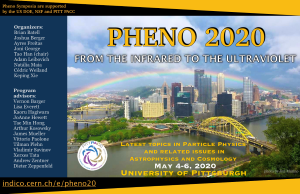Speaker
Description
We calculate the cross section for $e^+e^-$ annihilation into $D^{∗0}\bar{D}^0+\gamma$ at center-of-mass energies near the $D^{∗0}\bar{D}^{∗0}$ threshold under the assumption that $X(3872)$ is a weakly bound charm meson molecule. The Dalitz plot has a $\bar{D}^{∗0}$ resonance band in the squared invariant mass $t$ of $\bar{D}^0 \gamma$. In the limit as the decay width of the $D^{∗0}$ goes to 0, the Dalitz plot also has a narrow band from a charm-meson triangle singularity in the squared invariant mass $u$ of $D^{∗0}\bar{D}^0$. At the physical value of the $D^{∗0}$ width, the narrow band reduces to a shoulder. Thus the triangle singularity cannot be observed directly as a peak in a differential cross section as a function of $u$. It may however be observed indirectly as a local minimum in the $t$ distribution for events with $u$ below the triangle singularity. The minimum is produced by the Schmid cancellation between the triangle diagrams and their interference with a tree diagram. The observation of this minimum would support the identification of $X(3872)$ as a weakly bound charm meson molecule.
Summary
Exotic hardons

